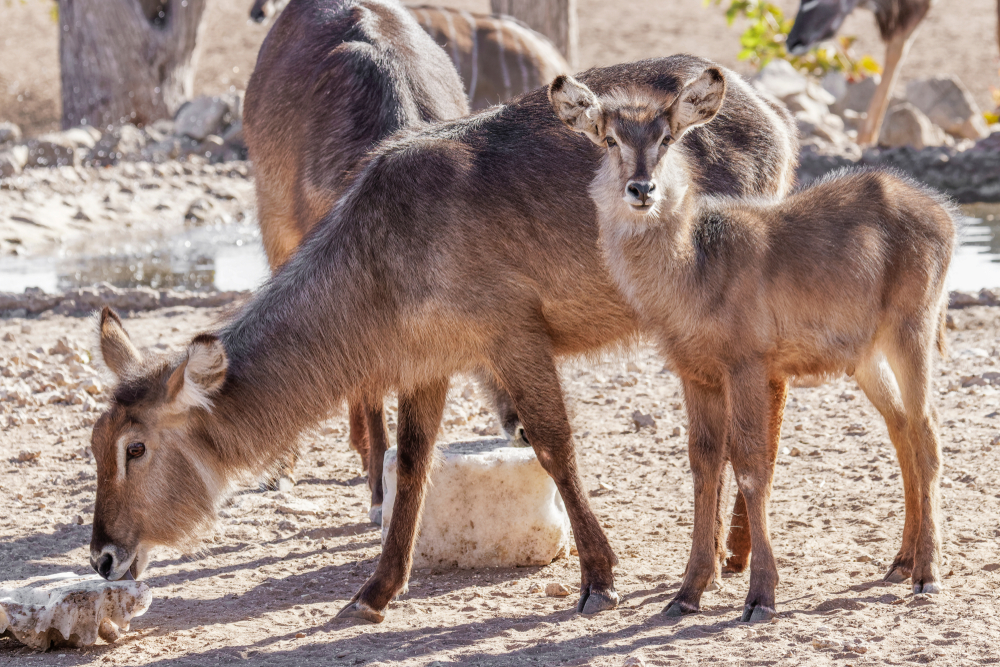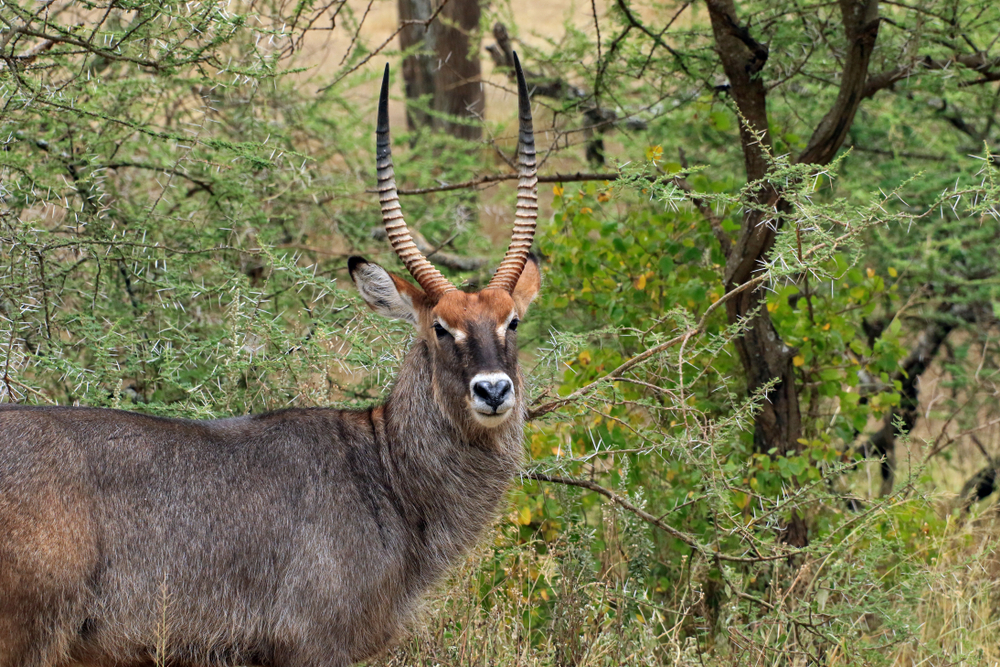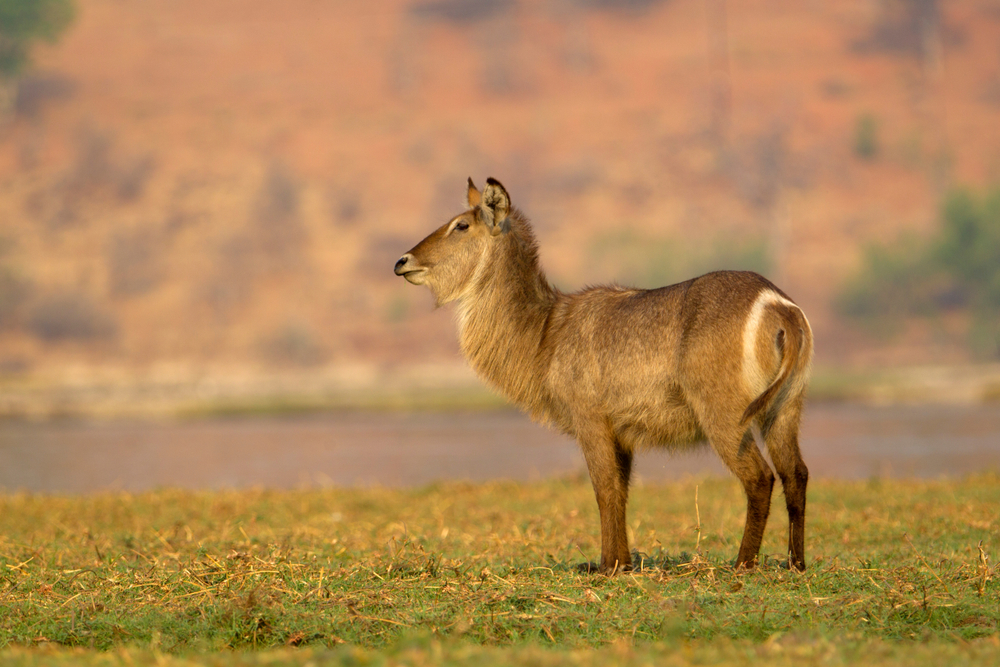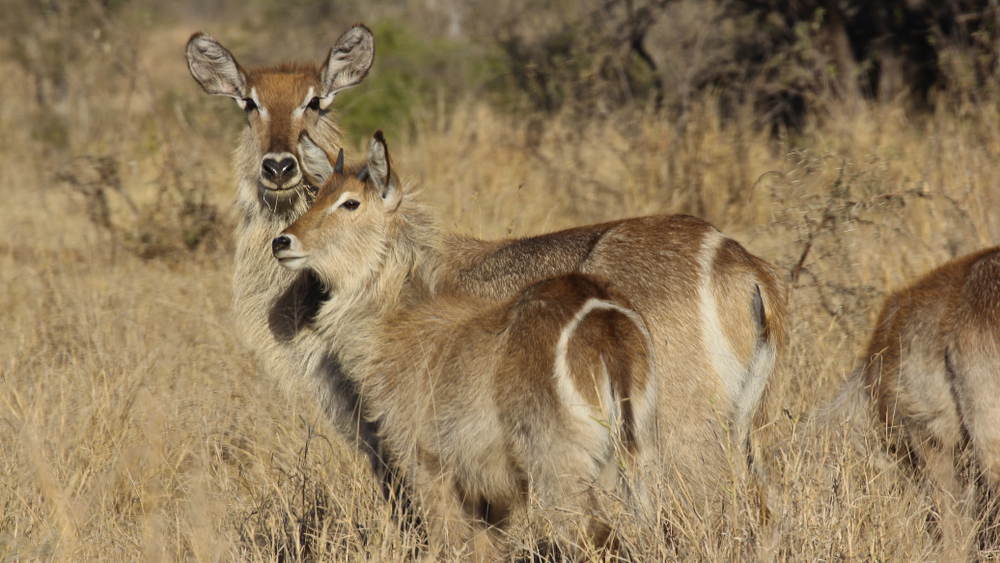Waterbucks (Kobus ellipsiprymnus) exhibit several characteristics and behaviors that distinguish them from other antelope species:
- White Rump Ring: The most distinctive feature of waterbucks is the prominent white ring or “watermark” encircling their rump, which is absent in most other antelopes.
- Aquatic Adaptations: Waterbucks are well-adapted to wetland habitats and often wade into water to feed on aquatic vegetation. Their swimming ability and oily skin secretion set them apart.
- Robust Build: They have a robust build with a hump of muscle on their shoulders, giving them a unique appearance among antelopes.
- Selective Grazers: Waterbucks exhibit selective feeding habits, choosing specific grasses and vegetation based on nutritional value. They adapt their diet to seasonal variations in plant growth.
- Territorial Males: During the mating season, dominant males establish territories and compete for access to females through displays of dominance and combat. This territorial behavior is distinctive in their social structure.
- Predator Avoidance: When threatened by terrestrial predators, waterbucks have the ability to escape by diving into water, a behavior not commonly seen in other antelope species.
- Habitat Preference: They are often associated with wetland environments, including swamps, riverbanks, and lakeshores, and their adaptations are specialized for such habitats.
- Lifespan in Captivity: Waterbucks can live longer in captivity compared to the wild, with well-managed individuals reaching over 20 years in captivity.
- Conservation Status: Waterbucks are often less targeted by poachers compared to some other antelope species, contributing to their relatively stable population status.
While waterbucks share some common traits with other antelopes, such as herbivorous diets and social behaviors, their unique adaptations to aquatic habitats, distinctive markings, make them easily recognizable and distinguishable from other antelope species in the African wilderness.

















































































